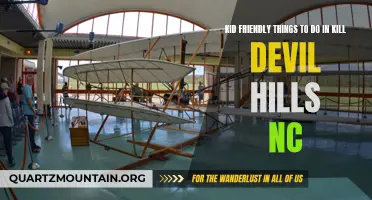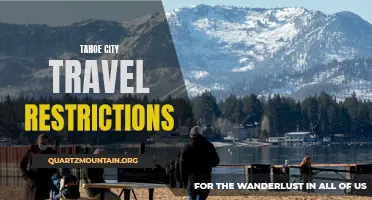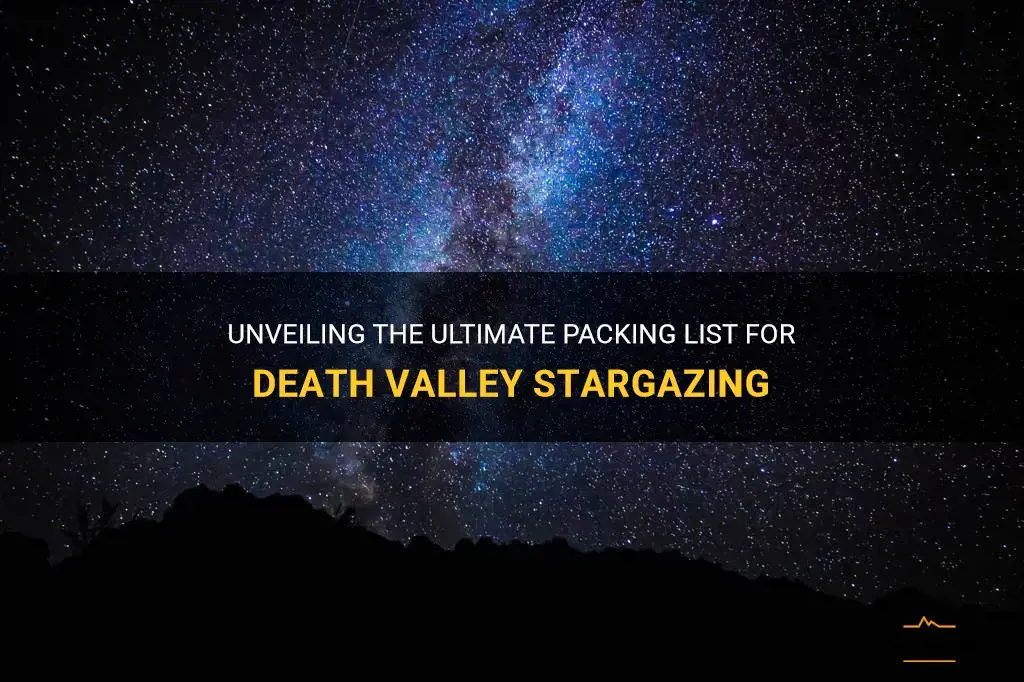
Are you ready to embark on an extraordinary journey through the vastness of the universe? Look no further than Death Valley, home to some of the most awe-inspiring stargazing opportunities on the planet. But before you get lost in the celestial wonders, it's important to pack wisely. Whether you're a seasoned astronomer or a curious traveler, our ultimate packing list will ensure you have everything you need to fully immerse yourself in the captivating beauty of Death Valley's starry skies. From telescopes and star charts to cozy blankets and bug spray, we've got you covered for an unforgettable stargazing adventure in Death Valley.
What You'll Learn
- What essential items should I pack for stargazing in Death Valley?
- Are there any specific clothing items or gear recommendations for nighttime stargazing in Death Valley?
- How should I prepare for the extreme temperatures in Death Valley while stargazing?
- Are there any specific types of food or drink that are recommended for a night of stargazing in Death Valley?
- What navigation tools or apps are useful for finding the best stargazing spots in Death Valley?

What essential items should I pack for stargazing in Death Valley?
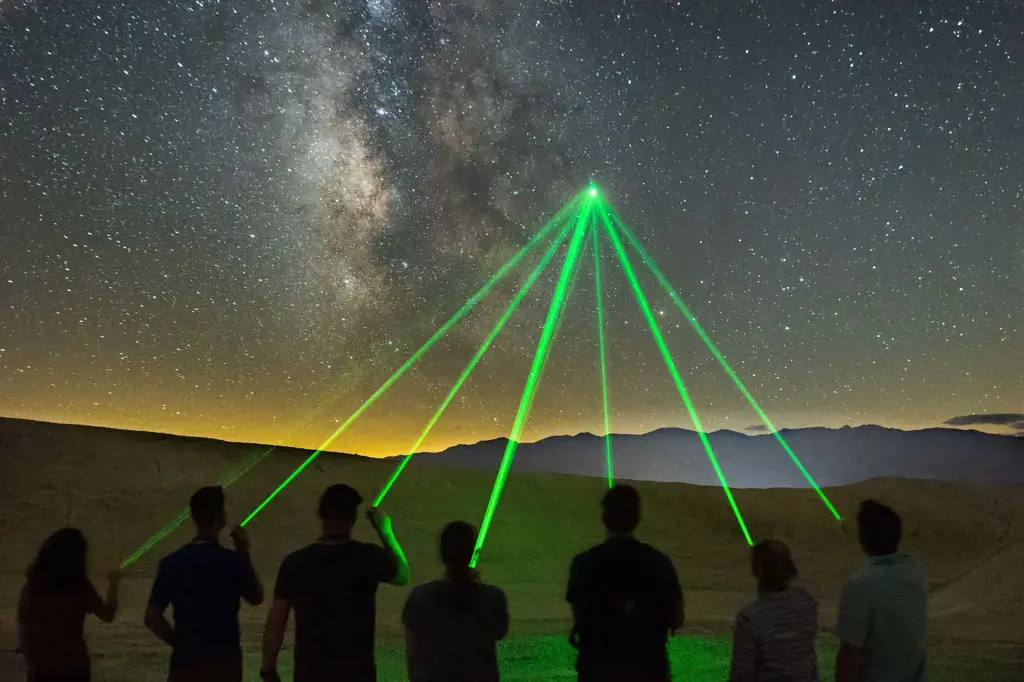
When planning a stargazing trip to Death Valley, it is important to pack the right essential items to make your experience enjoyable and successful. Death Valley is well-known for its dark skies and excellent stargazing opportunities, so proper preparation is key. Here are some essential items that you should consider packing for your stargazing adventure in Death Valley:
- Telescope or Binoculars: Bringing a telescope or a pair of binoculars is essential for observing celestial objects in detail. Opt for a telescope with a larger aperture, which allows for better light gathering and clearer views of distant objects. Binoculars with high magnification and good light transmission are also a great option for stargazing in Death Valley.
- Star Chart or Astronomy App: A star chart or an astronomy app on your smartphone can help you identify and locate different celestial objects in the night sky. These tools provide valuable information about the position of stars, planets, constellations, and other interesting phenomena. They can be a great aid for beginners and experts alike.
- Red Flashlight: A red flashlight is a must-have item for stargazing as it helps to preserve your night vision. Red light is less likely to interfere with your eyes' adaptation to the darkness, allowing you to see celestial objects more clearly. Avoid using white light or bright flashlights as they can hinder your ability to observe faint objects.
- Warm Clothing and Layers: Death Valley is known for its extreme temperature variations, especially at night. To stay comfortable during your stargazing session, pack warm and layerable clothing. Even in the desert, temperatures can drop significantly after sunset, so be prepared with a jacket, hat, gloves, and thick socks to keep warm.
- Camping Chair or Blanket: Having a comfortable seating option such as a camping chair or a blanket can make your stargazing experience more enjoyable. Set up your chair or spread out your blanket in a suitable location to relax and gaze at the stars for an extended period without discomfort.
- Snacks and Water: Stargazing can be a mesmerizing and time-consuming activity. It is important to stay hydrated and nourished during your outing. Bring plenty of water and some light snacks to keep your energy levels up throughout the night.
- Camera and Tripod: If you want to capture the beauty of the night sky, bringing a camera with manual settings and a sturdy tripod is essential. Long exposure photography can help capture stunning shots of stars, the Milky Way, and other celestial objects. Just remember to bring spare batteries and memory cards to avoid running out of storage or power.
- Star Guide or Book: If you're interested in learning more about the stars and constellations you'll be seeing, consider packing a star guide or a book. These resources provide detailed information about different celestial objects, their histories, and their significance in various cultures. Reading up on these topics during your stargazing trip can enhance your overall experience.
Remember to plan your trip according to the moon phase. New moon and crescent moon phases are ideal for stargazing, as they offer darker skies and more visibility of distant celestial objects. Additionally, check the weather forecast and choose nights with clear skies to ensure optimal stargazing conditions.
By packing these essential items and following the tips mentioned above, you can have an incredible stargazing experience in Death Valley. Enjoy exploring the wonders of the night sky and take in the breathtaking views that this unique destination has to offer.
Essential Packing Guide for a 4-Day Autumn Getaway: Men's Checklist
You may want to see also

Are there any specific clothing items or gear recommendations for nighttime stargazing in Death Valley?
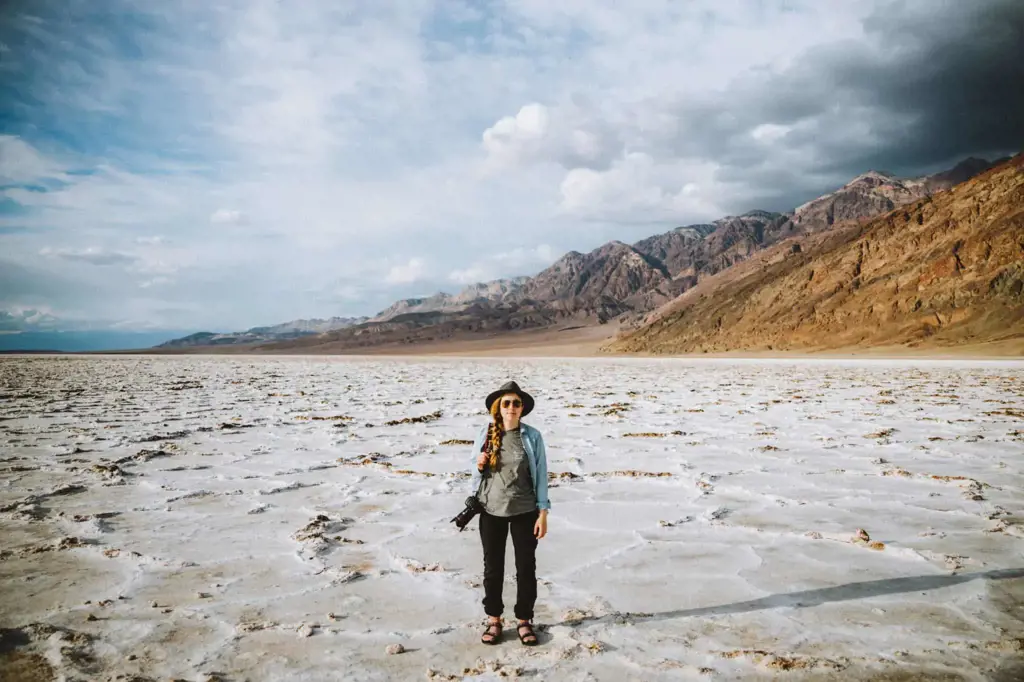
Stargazing in Death Valley is a unique experience that offers stunning views of the night sky. To fully enjoy the celestial show, it is important to be prepared and equipped with the right clothing and gear. Here are some recommendations for nighttime stargazing in Death Valley.
Clothing:
- Dress in layers: While Death Valley is known for its scorching temperatures during the day, the desert can get quite chilly at night. It is advisable to dress in layers, so you can add or remove clothing as needed. A base layer made of moisture-wicking material will help keep you dry and comfortable. Add a lightweight but warm mid-layer, such as a fleece or puffy jacket, for insulation. A waterproof and windproof outer layer will protect you from any unexpected weather changes.
- Wear dark colors: When stargazing, it is important to minimize any light pollution. Wearing dark-colored clothing can help prevent your body from reflecting light and disturbing the natural darkness of the night sky.
- Cover your extremities: Don't forget to cover your hands, feet, and head. Warm gloves, woolen socks, and a beanie or hat will help to retain body heat and keep you comfortable during the cooler nighttime temperatures.
Footwear:
Wear sturdy and comfortable shoes: As you explore Death Valley for stargazing spots, it is important to have sturdy and comfortable footwear. Opt for closed-toe shoes with good traction to protect your feet and provide support during uneven terrains.
Gear:
- Telescope or binoculars: To enhance your stargazing experience, consider bringing a telescope or a good pair of binoculars. These will allow you to observe celestial objects in more detail and bring the galaxies, nebulae, and star clusters closer to your eyes.
- Star chart or mobile app: A star chart or a stargazing mobile app can help you navigate the night sky and identify different constellations, planets, and stars. These handy tools will enhance your understanding of what you are seeing and add educational value to your experience.
- Red flashlight: Traditional flashlights emit white light, which can disrupt your night vision and make it harder to see the stars. A red flashlight, however, preserves your night vision as it does not affect the rods in your eyes that are responsible for low-light vision. This will allow you to navigate your surroundings and read star charts without compromising your ability to see the night sky clearly.
Safety Considerations:
- Stay hydrated: Even though the temperatures drop at night, it is still important to stay hydrated. Carry enough water with you and take regular sips to prevent dehydration.
- Apply insect repellent: Death Valley is home to several insects, and using insect repellent will help prevent bug bites and discomfort during your stargazing session.
- Be aware of wildlife: While stargazing in Death Valley, be mindful of the desert's wildlife. Keep a safe distance from any wild animals you might encounter and do not disturb their natural habitats.
In conclusion, to have the best nighttime stargazing experience in Death Valley, it is important to dress appropriately for the cool desert night temperatures, wear dark-colored clothing to minimize light pollution, and have the right gear such as a telescope or binoculars, a star chart or mobile app, and a red flashlight. Safety considerations like staying hydrated, applying insect repellent, and respecting wildlife should also be kept in mind. With these recommendations in mind, you'll be ready to immerse yourself in the breathtaking beauty of the night sky in Death Valley.
Essential Items to Pack in Your Hospital Bag
You may want to see also

How should I prepare for the extreme temperatures in Death Valley while stargazing?
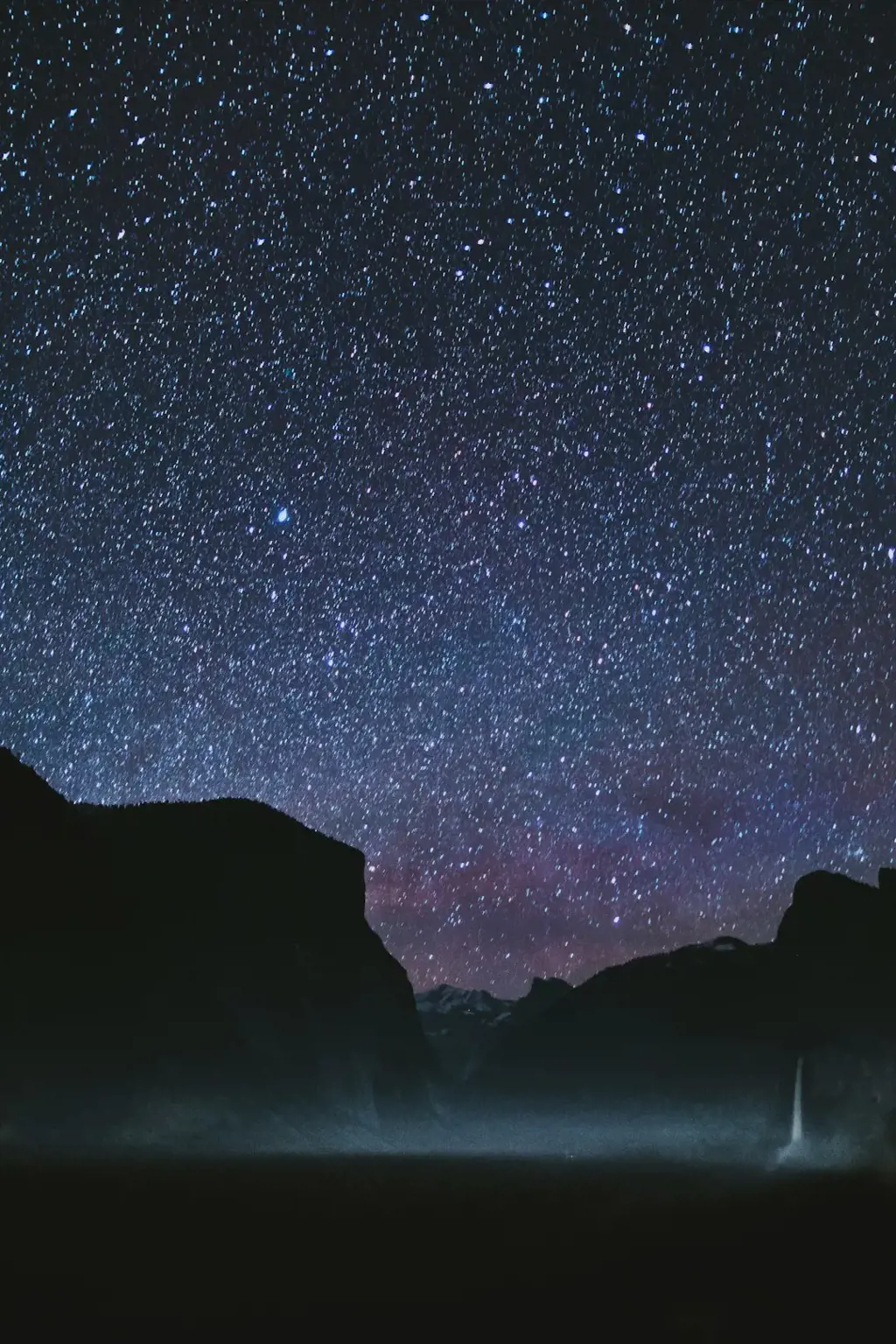
Death Valley is known for its extreme temperatures, with summer temperatures regularly exceeding 100 degrees Fahrenheit (38 degrees Celsius). This harsh environment can make stargazing a challenging but rewarding experience. Here are some tips to help you prepare for the extreme temperatures in Death Valley while enjoying the breathtaking beauty of the night sky.
Dress appropriately:
Before heading out, make sure to dress in light, loose-fitting clothing to protect yourself from the intense heat. Opt for breathable fabrics like cotton or linen to help keep you cool. It's also essential to wear a wide-brimmed hat, sunglasses, and sunscreen to shield yourself from the strong desert sun.
Carry plenty of water:
Staying hydrated is crucial when dealing with extreme temperatures. Always carry ample amounts of water with you. It's recommended to carry at least one gallon of water per person per day, especially when spending extended periods outdoors. Drink water regularly, even if you don't feel thirsty, to avoid dehydration.
Plan your stargazing trip during cooler hours:
To avoid the scorching heat of the day, plan your stargazing trip during the cooler hours. Twilight and dawn provide ideal conditions for stargazing, as the temperature drops slightly, and the sky becomes darker. This will allow you to enjoy the night sky without enduring the hottest part of the day.
Choose appropriate stargazing locations:
Death Valley offers several designated stargazing areas that provide outstanding views of the night sky. The Mesquite Sand Dunes, Harmony Borax Works, and Dante's View are popular spots frequented by stargazing enthusiasts. These locations offer unobstructed views and minimal light pollution, allowing for a rich stargazing experience.
Bring essential stargazing equipment:
To make the most of your stargazing adventure, be sure to bring essential equipment such as a telescope, binoculars, or a star chart to help identify constellations and celestial objects. Consider investing in a red flashlight, as red light has less impact on night vision and won't disturb fellow stargazers.
Be mindful of wildlife:
While stargazing in Death Valley, be aware of the native wildlife, such as scorpions and snakes. Always stay on designated pathways and keep an eye out for any potential hazards. It's also crucial to respect the natural environment and leave no trace behind.
Don't forget to acclimatize:
If you're not used to extreme temperatures, it's vital to give your body time to acclimatize gradually. Spending a few days in the area before attempting any strenuous outdoor activities can help your body adjust to the heat. Take it easy and listen to your body's cues to avoid heat-related illnesses.
In conclusion, stargazing in Death Valley requires careful preparation due to the extreme temperatures. By dressing appropriately, carrying plenty of water, planning your trip during cooler hours, choosing suitable locations, bringing essential equipment, being mindful of wildlife, and acclimatizing to the heat, you can enjoy an unforgettable stargazing experience in one of the most breathtaking settings on Earth. Remember to stay safe and take necessary precautions to ensure a memorable and enjoyable adventure.
Essential Items to Pack for Your Courchevel Vacation
You may want to see also

Are there any specific types of food or drink that are recommended for a night of stargazing in Death Valley?
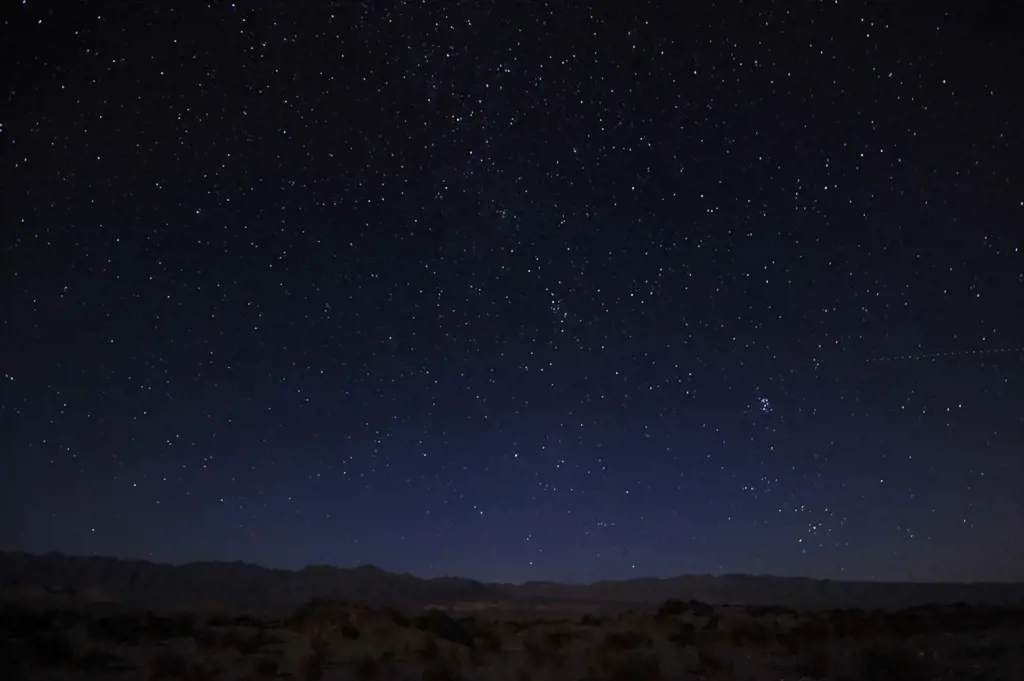
When planning a night of stargazing in Death Valley, it is important to consider the types of food and drink that will enhance the experience. The remote location and unique environment of Death Valley provide the opportunity for a truly unforgettable stargazing adventure. By choosing the right food and drink, you can enhance your night under the stars and make the most of this incredible experience.
The extreme temperatures and dry climate of Death Valley pose some challenges when it comes to selecting food and drink for stargazing. It is important to choose items that will not spoil easily and can withstand the heat. Additionally, dehydration is a real concern in such arid conditions, so staying hydrated is essential.
One type of food that is recommended for a night of stargazing in Death Valley is trail mix. Trail mix is a convenient and portable snack that provides a combination of proteins, carbohydrates, and healthy fats to keep you energized throughout the night. It is also easy to store and does not require refrigeration, making it ideal for this type of outing.
Another option for stargazing in Death Valley is pre-packaged freeze-dried meals. These meals are lightweight, easy to prepare, and have a long shelf life. They are designed to be rehydrated with water, making them a perfect choice for a night in the desert. Some freeze-dried meal options even feature stargazing-themed packaging, adding to the ambiance of the experience.
In terms of drinks, water should be your top priority. Staying hydrated is crucial, especially in the hot and arid climate of Death Valley. It is recommended to bring plenty of water and continuously sip throughout the night to prevent dehydration.
In addition to water, herbal tea can also be a refreshing and soothing choice for stargazing in Death Valley. Herbal teas such as chamomile or mint can help relax and calm your senses, enhancing the tranquility of the experience. Just be sure to bring a thermos to keep your tea warm throughout the night.
If you're looking to indulge in a more celebratory drink, consider a bottle of Champagne or sparkling wine. The sparkling bubbles can add to the enchanting atmosphere of the night, and a toast under the stars can make the experience even more memorable. Just be cautious with alcohol consumption and remember to drink responsibly.
In conclusion, when stargazing in Death Valley, it is recommended to choose food and drink options that are non-perishable, heat-resistant, and hydrating. Trail mix and pre-packaged freeze-dried meals are convenient and provide sustenance throughout the night. Water should be a priority to prevent dehydration, but herbal teas or sparkling wine can also enhance the experience. By considering these options, you can enhance your night of stargazing in Death Valley and create a truly unforgettable experience under the vast desert sky.
Choosing the Right Backpack Size for the Amateur Backpacker
You may want to see also

What navigation tools or apps are useful for finding the best stargazing spots in Death Valley?
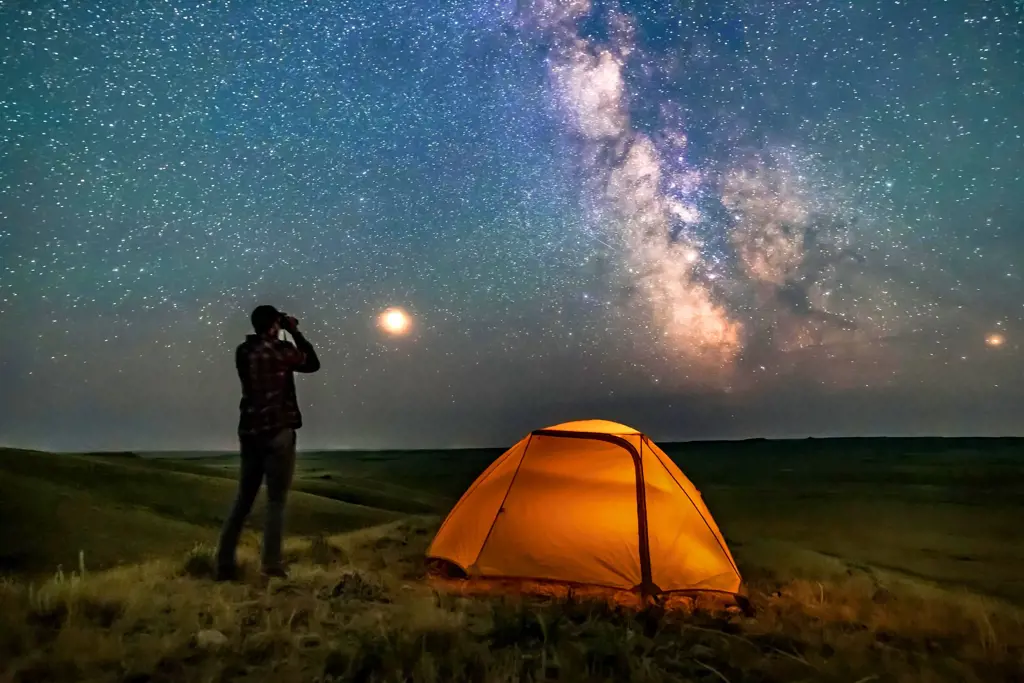
Imagine the feeling of lying under a star-filled sky in Death Valley, surrounded by absolute darkness and the serene silence of the desert. Death Valley National Park, located in California, is known for its expansive landscapes and ideal conditions for stargazing. However, finding the perfect spot to observe the night sky can be a challenge, especially for first-time visitors. Thankfully, there are several navigation tools and apps that can help you navigate Death Valley and find the best stargazing spots.
One of the most popular navigation tools is a GPS device or smartphone app. These devices use satellite technology to pinpoint your location and provide accurate directions. There are many GPS apps available for both iOS and Android devices, some of which offer extra features like offline maps and navigation tips.
Another useful tool for stargazing in Death Valley is a star map or a stargazing app. These resources provide detailed information about the celestial bodies visible from a specific location. They often include interactive features like augmented reality that allow you to point your device towards the sky and see the names and positions of stars and constellations in real-time.
Aside from navigation tools, there are several steps you can take to ensure you find the best stargazing spots in Death Valley. First, research the park's regulations and guidelines regarding stargazing. Some areas may have restrictions or require permits, so it's essential to be informed beforehand.
Next, consider the moon phase and weather conditions. A clear, moonless night is ideal for stargazing as it allows for better visibility. Check the moon phase calendar and weather forecasts to plan your visit accordingly.
When selecting a specific spot, look for areas with minimal light pollution. Death Valley has designated dark-sky areas where artificial lighting is limited to preserve the quality of the night sky. You can consult park maps or use light pollution maps available online to find these dark-sky locations.
Additionally, consider the topography of the area. Look for spots with unobstructed views of the horizon and minimal obstructions like trees or mountains that could obstruct your view of the stars.
Lastly, it's always helpful to learn from the experiences of others. Visit online forums, social media groups, and websites dedicated to stargazing in Death Valley. These platforms often contain valuable information, tips, and recommendations from seasoned stargazers who have explored the park before.
To illustrate the effectiveness of navigation tools and apps in finding the best stargazing spots, let's consider an example. Imagine you are planning a trip to Death Valley and want to stargaze at the best possible location. You start by downloading a GPS app on your smartphone and input the coordinates of a known dark-sky area in the park.
Once you arrive, you open your stargazing app, which uses augmented reality to display the names and positions of the stars and constellations visible from your location. You find a spot with a clear view of the horizon, away from any artificial lighting, and settle in to enjoy the night sky.
Throughout the night, you periodically refer back to your app to identify different stars and constellations, enhancing your stargazing experience and deepening your understanding of the celestial wonders above.
In conclusion, finding the best stargazing spots in Death Valley can be made easier with the help of navigation tools and apps. By utilizing GPS devices, star maps, and stargazing apps, you can navigate the park, locate dark-sky areas, and enhance your overall stargazing experience. Remember to research regulations, consider moon phases and weather conditions, and consult the experiences of others to maximize your chances of discovering the most breathtaking views of the night sky in Death Valley.
Essential Items for a Successful Deployment: The Ultimate Packing Guide
You may want to see also
Frequently asked questions
When preparing for a stargazing trip to Death Valley, it is important to pack a few essential items. Firstly, it is essential to bring warm clothing as the nights can be extremely cold in the desert. Layering is recommended, as temperatures can drop significantly after sunset. Additionally, it is important to bring a good quality flashlight or headlamp, as the park is very dark at night. It is also recommended to bring a star chart or a smartphone app that can help you identify constellations and planets in the night sky.
When stargazing in Death Valley, it is important to take some safety precautions. Firstly, it is important to stay hydrated and drink plenty of water, especially during the hot daytime temperatures. It is also important to be aware of the potential for flash floods in the area, as these can occur during the rainy season. When exploring the park at night, it is important to stick to designated trails and paths and avoid venturing off into unmarked areas. Finally, be cautious of wildlife in the area and keep a safe distance if you encounter any animals.
Yes, you are allowed to bring a telescope for stargazing in Death Valley. Many visitors enjoy bringing telescopes to the park to observe the night sky in greater detail. It is important to note that telescopes can be heavy and bulky, so make sure you have a sturdy carrying case or bag to transport the telescope. Additionally, be mindful of park regulations and make sure to set up your telescope in a designated stargazing area. It is also recommended to bring a solid tripod or mount for the telescope to ensure stability during observations.



